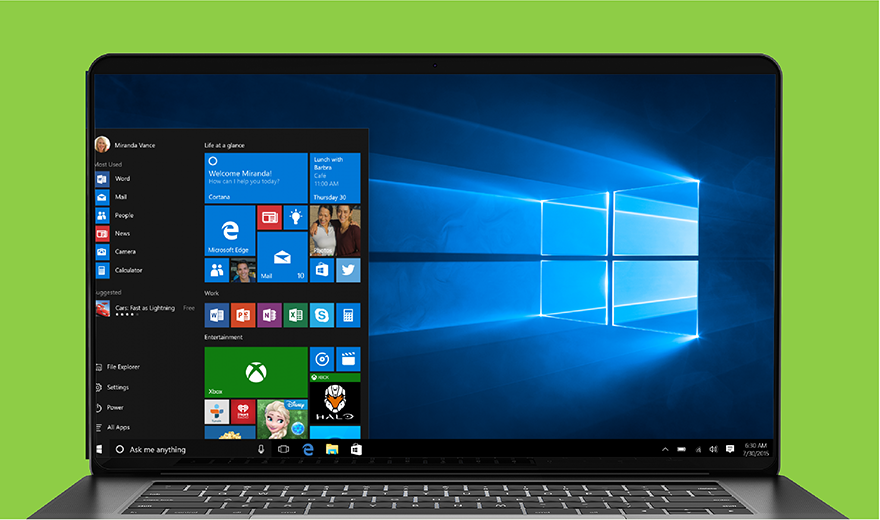Five Microsoft Windows 10 features to know in the enterprise
Windows 10 provides a Start menu that encompasses what users and IT liked about Windows 7's menu, while also adding new features to simplify user interaction.
Organizations did not widely adopt Windows 8 for many reasons, but a common criticism was the removal of the traditional Start menu. The return of the classic Start menu in Windows 10 isn't groundbreaking, but it simplifies user interaction with the OS.
The shortcut to the Windows 10 classic Start menu is in its traditional location: the bottom-left corner of the toolbar. The Windows 10 Start menu takes some elements of Windows 8's more mobile-oriented menu interface, such as the applications sidebar, which users or IT can customize based on which applications the end-user needs to access quickly.
The Start menu automatically displays applications and tools in alphabetical order. IT can, however, set a uniform interface for all users or user groups. With Group Policy settings, IT can define the Windows 10 classic Start menu interface across the organization using a simple XML file.
Users can enter queries with Cortana to find files, tools and applications in lieu of the Start menu, if IT enables Cortana. If users do not have access to Cortana, they can use the search bar function to supplement the Windows 10 classic Start menu.






